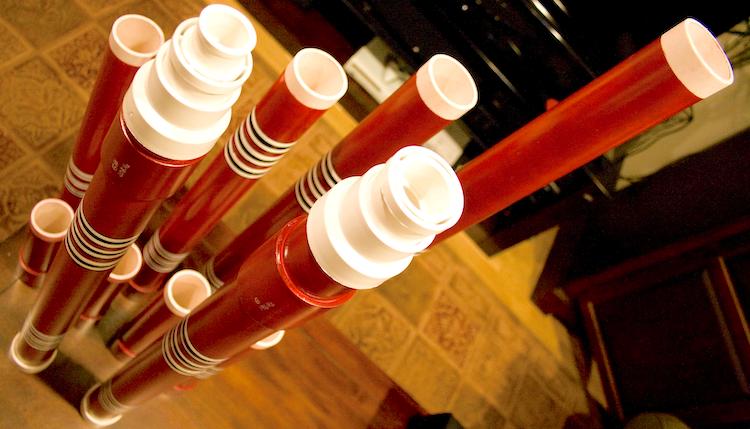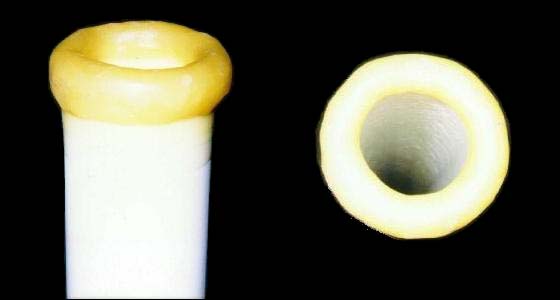Discover your inner drone through a DIY didgeridoo
Published 20 December 2016 by Cherise Fong
Not only is the didgeridoo one of the world’s oldest musical instruments, it can help treat asthma and sleep apnea. Best of all, anyone can make one out of a plastic pipe.
Tokyo, from our correspondent
If you want to play one of the world’s oldest musical instruments, if you like to beatbox or imitate the cries of wild animals, if you want to reach nirvana through sound meditation, if you suffer from asthma or sleep apnea, if you snore, or if you’re simply stressed out, grab a didgeridoo… and blow.
This long cylindrical musical instrument is iconic of Australia’s aboriginal culture, which dates back some 40,000 years. Even more notable (and good for health) is the circular respiration technique behind the uninterrupted drone for which the didgeridoo is known.
Czech virtuoso Ondrej Smeykal:
Traditionally, didgeridoos are made from eucalyptus trees that have been hollowed out by termites in northern Australia, then cut, debarked, polished and painted by an Aboriginal. There are also wooden didgeridoos made by artisans that sell for several hundred dollars.
Does the divine instrument’s authenticity seem beyond your means? Everything is possible in the maker world! A didgeridoo can be made from almost any kind of hollow cylinder with the appropriate inner diameter and length: bamboo stalks, metal pipes, plastic tubing, cardboard rolls… The mouthpiece, just like in ancient times, can still be molded by hand from beeswax.
Here we explain how to make your own portable, playable didgeridoo out of a PVC pipe from a hardware store, all for under $10.
Materials
– PVC pipe with a diameter of 3cm to 5cm and a length of 115cm to 160cm (or pieces that fit together to reach this length);
– Beeswax.
Tools
– Hacksaw;
– Sandpaper;
– Heat gun (or gas stove);
– Empty bottle;
– Empty aluminum can;
– Saucepan;
– Heat-resistant glove.
Assembly
1/ Pipe
Use the hacksaw to cut the pipe to the desired length (for example, to tune it to a specific key). Use the sandpaper to smooth out both ends. Wash the pipe completely with dishwashing liquid. If you plan to paint the didgeridoo, sand down the entire outside surface underwater. Dry.

2/ Bell flare
In order to round out the sound, flare out the end of the instrument. Hold the pipe about 15cm away from the heat gun (or stove flame), until it gets soft. Be careful not to let the plastic burn by holding it too close or too long in the heat, do not breathe in the fumes, and use the glove to test the malleability of the plastic. Once it becomes soft enough, push the pipe down over the neck of the bottle, so that it flares out into a bell shape.
3/ Mouthpiece
Fill the saucepan with water, and heat on low until it feels hot to the touch. Soak a piece of beeswax in it for about 15 minutes, or until it becomes soft enough to mold with your fingers. Be careful not to let the water get too hot, to prevent the beeswax from melting.
Mold the beeswax into a fat ring that will fit over the small end of the pipe to form the mouthpiece. Put it aside for now.
Place about 15g of beeswax into the aluminum can. Place the can in the saucepan and heat on low for about 20 minutes.
As soon as the beeswax has completely melted, quickly dip the small end of the pipe about 2.5cm in and out of the beeswax, then hold it above the saucepan until it stops dripping and a thin layer of wax forms on the plastic.
Apply the mouthpiece to the end of the pipe, molding and smoothing it out with your fingers. Then quickly dip the entire mouthpiece one last time into the melted beeswax in order to secure it in place. Let it dry and cool for about 20 minutes.

Now you’re ready to blow into your didgeridoo!
Didgeridoo lesson by Aboriginal Australian David Hudson:
Detailed instructions on how to make a didgeridoo out of PVC or bamboo, by “didjiman” Matthew Harris

